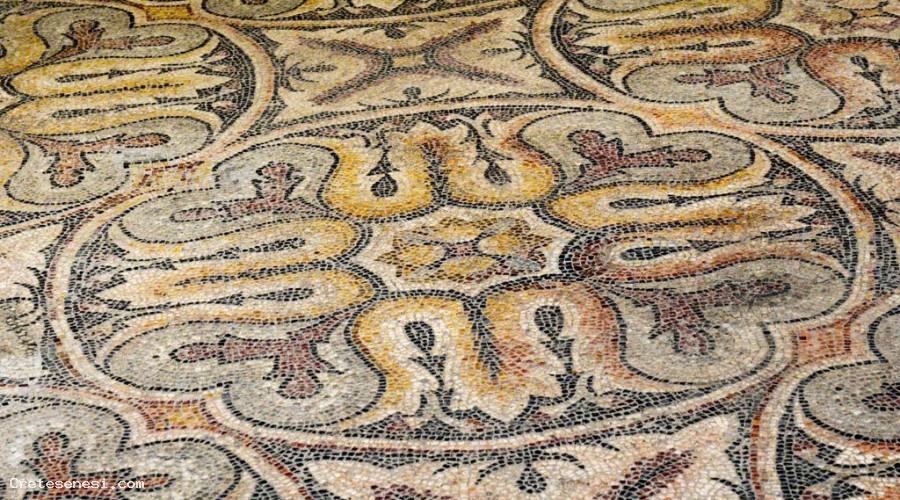Archaeological sites
Mosaico Villa Romana
ASCIANO LISTEN THE AUDIO GUIDE
LISTEN THE AUDIO GUIDE
In 1899 construction work begun by the owners Francini Naldi uncovered a Roman mosaic that may have been part of a spa or a formal drawing room belonging to an ancient Roman villa.
The excavation revealed the floor of a rectangular room with an adjoining square exedra. The division between the two spaces is clear from two different mosaic decorations that are still quite visible.
In fact, in the main compartment you can appreciate a polychrome floral motif contained in tangent circles to each other, while the small esedra is decorated with geometric motifs and knots of Solomon.
Whatever the actual function of the place, it certainly belonged to a sumptuous Roman villa from the second century A.D. Located, in a panoramic position. The large villa seems to have belonged to the rich Domizi family.
Attribution that emerges from the spot recognition of a mark printed on to their brickwork which can be recalled. This suggests that the dwelling, in the III sec. DC, would have passed through Domitia Lucilla, in the imperial heritage of Marcus Aurelius.
In 1899 construction work begun by the owners Francini Naldi uncovered a Roman mosaic that may have been part of a spa or a formal drawing room belonging to an ancient Roman villa.
The excavation revealed the floor of a rectangular room with an adjoining square exedra. The division between the two spaces is clear from two different mosaic decorations that are still quite visible.
In fact, in the main compartment you can appreciate a polychrome floral motif contained in tangent circles to each other, while the small esedra is decorated with geometric motifs and knots of Solomon.
Whatever the actual function of the place, it certainly belonged to a sumptuous Roman villa from the second century A.D. Located, in a panoramic position. The large villa seems to have belonged to the rich Domizi family.
Attribution that emerges from the spot recognition of a mark printed on to their brickwork which can be recalled. This suggests that the dwelling, in the III sec. DC, would have passed through Domitia Lucilla, in the imperial heritage of Marcus Aurelius.